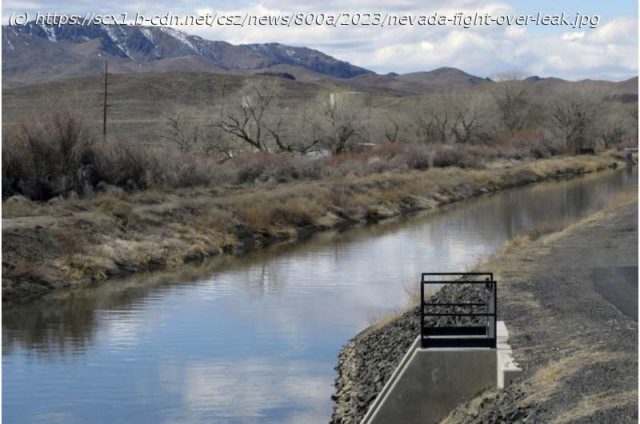Water conflicts are nothing new to the arid West, where myriad users long have vied for their share of the precious resource from California’s Central Valley to the Colorado and Missouri rivers.
Water conflicts are nothing new to the arid West, where myriad users long have vied for their share of the precious resource from California’s Central Valley to the Colorado and Missouri rivers.
But few have waded into the legal question playing out in rural Nevada: To what extent can local residents, farmers and ranchers claim the water that is soaking into the ground through the dirt floor of an antiquated, unlined irrigation canal?
A federal appeals court recently breathed new life into litigation that has entangled the U.S. government and the high-desert town of Fernley ever since a 118-year-old canal burst and flooded hundreds of homes in 2008.
This year the U.S. Bureau of Reclamation began work on a plan to line parts of the 31-mile (50 kilometer) canal with concrete. The canal diverts water from the Truckee River, which flows out of Lake Tahoe in the Sierra, sending it to irrigation ditches supporting alfalfa farmers and livestock ranchers about 30 miles (50 kilometers) east of Reno.
However, farmers and ranchers in and around the town of Fenley said the repairs would stop water from leaking that they have used for a century to help fill their wells east of Reno.
The government says locals don’t have any rights to the water that belongs to U.S. taxpayers. Government experts say the renovation also willl help guard against future canal failures even though they acknowlege it will prevent leaks into the local aquifer used by Fenley’s residents.
Completed in 1905, the Truckee Canal was the first major irrigation system in the West under the Newlands Reclamation Act signed by President Theodore Roosevelt in 1902.
The act was named after a Nevada congressman who said the project would «make the desert bloom» and attract settlers to places like Fernley, where annual rainfall averages 5 inches (13 centimeters).
Similar projects followed across the arid West—many much larger. Construction began in 1903 on the Theodore Roosevelt Dam on the Salt River in Arizona, which Roosevelt himself dedicated in 1911.






